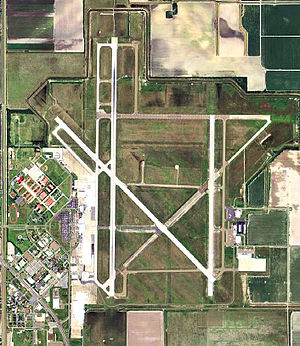
Williams Air Force Base is a former United States Air Force (USAF) base, located in Maricopa County, Arizona, east of Chandler, and about 30 miles (48 km) southeast of Phoenix. It is a designated Superfund site due to a number of soil and groundwater contaminants.
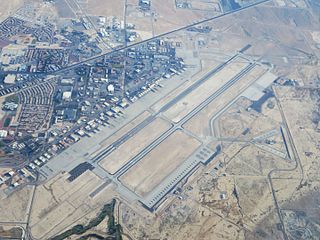
Nellis Air Force Base is a United States Air Force installation in southern Nevada. Nellis hosts air combat exercises such as Exercise Red Flag and close air support exercises such as Green Flag-West flown in "Military Operations Area (MOA) airspace", associated with the nearby Nevada Test and Training Range (NTTR). The base also has the Combined Air and Space Operations Center-Nellis.

The Boeing T-43 is a modified Boeing 737-200 that was used by the United States Air Force for training navigators, now known as USAF combat systems officers, from 1973 to 2010. Informally referred to as the Gator and "Flying Classroom", nineteen of these aircraft were delivered to the Air Training Command (ATC) at Mather Air Force Base, California during 1973 and 1974. Two additional aircraft were delivered to the Colorado Air National Guard at Buckley Air National Guard Base and Peterson Air Force Base, Colorado, in direct support of cadet air navigation training at the nearby U.S. Air Force Academy. Two T-43s were later converted to CT-43As in the early 1990s and transferred to Air Mobility Command (AMC) and United States Air Forces in Europe (USAFE), respectively, as executive transports. A third aircraft was also transferred to Air Force Materiel Command (AFMC) for use as the "Rat 55" radar test bed aircraft and was redesignated as an NT-43A. The T-43A was retired by the Air Education and Training Command (AETC) in 2010 after 37 years of service.
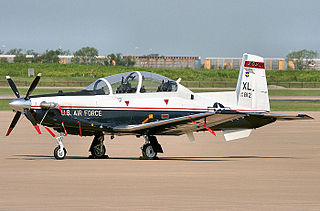
Laughlin Air Force Base is a facility of the United States Air Force located east of Del Rio, Texas.
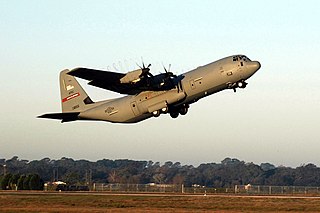
Keesler Air Force Base is a United States Air Force base located in Biloxi, a city along the Gulf Coast in Harrison County, Mississippi, United States. The base is named in honor of aviator 2d Lt Samuel Reeves Keesler Jr., a Mississippi native killed in France during the First World War. The base is home of Headquarters, Second Air Force and the 81st Training Wing of the Air Education and Training Command (AETC).

Randolph Air Force Base is a United States Air Force base located at Universal City, Texas.

The Air Education and Training Command (AETC) is one of the nine Major Commands (MAJCOM) of the United States Air Force (USAF), reporting to Headquarters, United States Air Force. It was established 1 July 1993, with the realignment of Air Training Command and Air University.

Mather Air Force Base was a United States Air Force Base, which was closed in 1993 pursuant to a post-Cold War BRAC decision. It was located 12 miles (19 km) east of Sacramento, on the south side of U.S. Route 50 in Sacramento County, California. Mather Field was one of 32 Air Service training camps established after the United States entry into World War I in April 1917.

The Air Training Command (ATC) is a former United States Air Force (USAF) Major Command designation. It was headquartered at Randolph Air Force Base, Texas, but was initially formed at Barksdale Air Force Base, Louisiana. It was re-designated as Air Education and Training Command (AETC) following a merger with Air University (AU) on 1 July 1993.

Foster Air Force Base is a former United States Air Force facility in Texas, located in Victoria County, approximately six miles (10 km) east-northeast of Victoria.
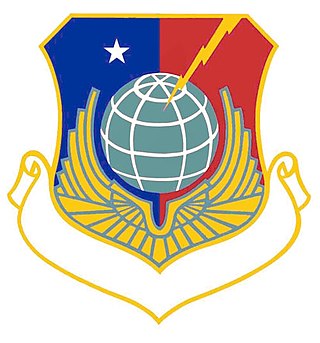
The 323rd Air Expeditionary Wing is a provisional United States Air Force unit assigned to the United States Air Forces in Europe. As a provisional unit, it may be activated or inactivated at any time.

Ellington Field Joint Reserve Base is a joint installation shared by various active component and reserve component military units, as well as aircraft flight operations of the National Aeronautics and Space Administration (NASA) under the aegis of the nearby Johnson Space Center. The host wing for the installation is the Texas Air National Guard's 147th Attack Wing. Opened in 1917, Ellington Field was one of thirty-two Air Service training camps established after the United States entry into World War I. It is named for First Lieutenant Eric Ellington, a U.S. Army aviator who was killed in a plane crash in San Diego, California in 1913.
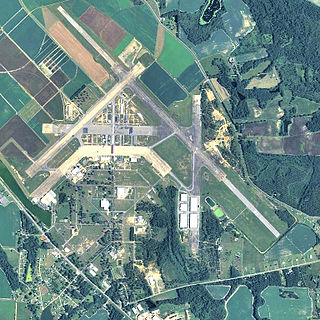
Spence Air Base was a United States Air Force base that operated from 1941 to 1961. It was later reopened as Spence Airport.

The United States Army Air Forces during World War II had major subordinate Commands below the Air Staff level. These Commands were organized along functional missions. One such Command was the Flying Training Command (FTC). It began as Air Corps Flying Training Command on 23 January 1942, was redesignated Army Air Forces Flying Training Command (AAFTC) on 15 March 1942, and merged with Army Air Forces Technical Training Command to become Army Air Forces Training Command on 31 July 1943. Continuing service after the war, it was redesignated Air Training Command on 1 July 1946. During the consolidation of Air Force Major Commands in the retrenchment of the 1990s, Air Training Command assumed control of Air University and became Air Education and Training Command on 1 July 1993—today's Air Education and Training Command (AETC), which celebrated its 75th anniversary 23 January 2017. see the Lineage and honors statement for AETC.
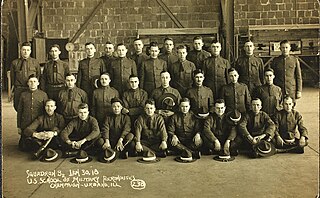
The Flying/Aviation Cadet Pilot Training Program was originally created by the U.S. Army to train its pilots. Originally created in 1907 by the U.S. Army Signal Corps, it expanded as the Army's air assets increased.
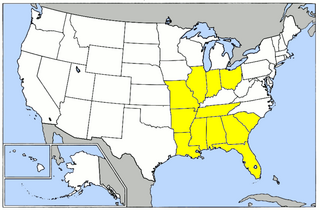
The Army Air Forces Eastern Flying Training Command (EFTC) was a unit of the United States Army Air Forces. It was assigned to the Army Air Forces Training Command, stationed at Maxwell Field, Alabama. It was inactivated on 15 December 1945.
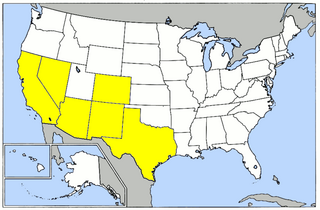
The Army Air Forces Western Flying Training Command (WFTC) was a command of the United States Army Air Forces. It was assigned to the Army Air Forces Training Command, stationed at Santa Ana Army Air Base, California. It was inactivated on 1 November 1945.

Army Air Forces Gunnery Schools were World War II organizations for training personnel in the skill of aerial gunnery. The several schools existed at domestic Army Airfields and gunnery ranges.

The 35th Flying Training Wing is an inactive United States Air Force unit. It was last assigned to the Western Flying Training Command, and was disbanded on 16 June 1946 at the Minter Field, California.

Webb Air Force Base, previously named Big Spring Air Force Base, was a United States Air Force facility of the Air Training Command that operated from 1951 to 1977 in West Texas within the current city limits of Big Spring. Webb AFB was a major undergraduate pilot training (UPT) facility for the Air Force, and by 1969, almost 9,000 pilots had been trained at Webb. The last operational wing at Webb AFB was the 78th Flying Training Wing.
